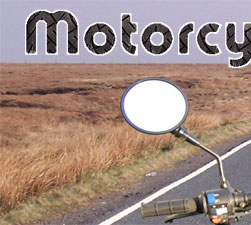|

|
Getting more power out of a motorcycle engine is relatively simple, in theory. Internal combustion engines get their power from burning fuel and oxygen. To increase the motorcycle's power, you really just have to increase the amount of air and gas getting to the engine. Making that happen, however, can be easier said than done. One of the most effective ways of increasing the amount of fuel getting to the motorcycle's engine is to swap out the carburetor jets. The task of opening up a carburetor may be daunting to some, but in my experience the hardest part is usually getting the carburetor off the motorcycle.
Inside the motorcycle there are a number of jets, each with its own role in supplying fuel throughout the power band. Most of the jets are simply brass fittings with a hole in the center designed to aerate the fuel. The carburetor's venturi accelerate the air as it goes from the intake to the engine. The accelerated air creates a vacuum that draws the gasoline up from the fuel bowl through the holes in the jets. In the past, people would drill out their jets to increase the amount of fuel coming through but if the resulting air/fuel mix was off, it could actually end up hurting the motorcycle's performance. Today, you can buy a kit with jets that are precisely manufactured to match up the amount of fuel with more aggressive intake and exhausts.
 
Shop for Jet Kits at BikeBandit.com
Within the carburetor there is another style of carburetor jet. The needle jet made up of two components at the core of the carburetor. The jet needle is a tapered metal rod that slides up and down based on changes in pressure within the carburetor. The tip of the rod rests inside the needle jet. When the jet needle is at its lowest point, it acts almost like a cork, filling the hole in the jet and restricting the amount of fuel that can pass through. As the needle is drawn up, less of the needle obstructs the jet's opening and more fuel is allowed to enter. In the past, shimming the needle raised it up to increase the fuel flow. Motorcycle jet kits come with more aggressive replacements for this jet, often with adjustable needles.
Jets and valves are activated at different points in the power band (with overlap) to ensure smooth acceleration. They are activated not by the RPM level of the motorcycle's engine, but by the throttle position.
- Pilot Jet: The pilot jet feeds fuel to the engine from 0% to about 25%
- Throttle Valve: This valve helps control the motorcycle's fuel mixture from 35% to wide open throttle.
- Needle Jet: The carburetor's needle jet helps control the motorcycle's fuel mixture from 15% throttle to 60%
- Jet Needle: The carb's jet needle works in conjunction with the needle jet to control the fuel flow from 20% to 80% throttle.
- Main Jet: The motorcycle carburetor controls the fuel mixture from 60% to 100% open throttle.
Most motorcycle rejetting kits replace the carburetor's Jet Needle and Main Jet, which will boost power and help balance out the increased airflow from aftermarket air filters and exhaust systems.
|






